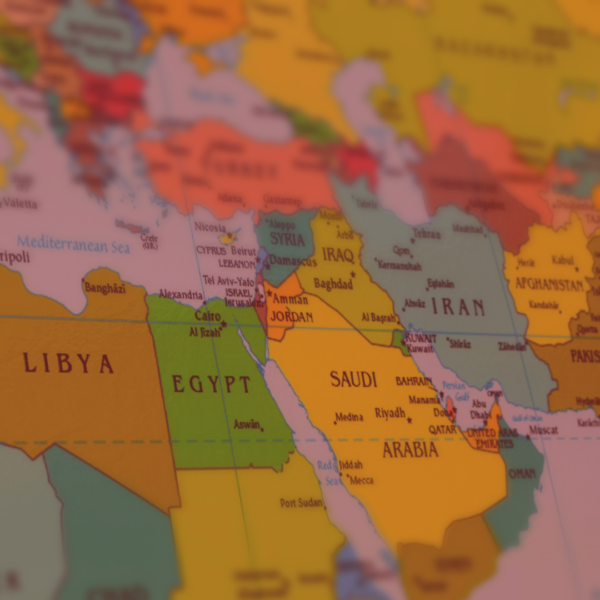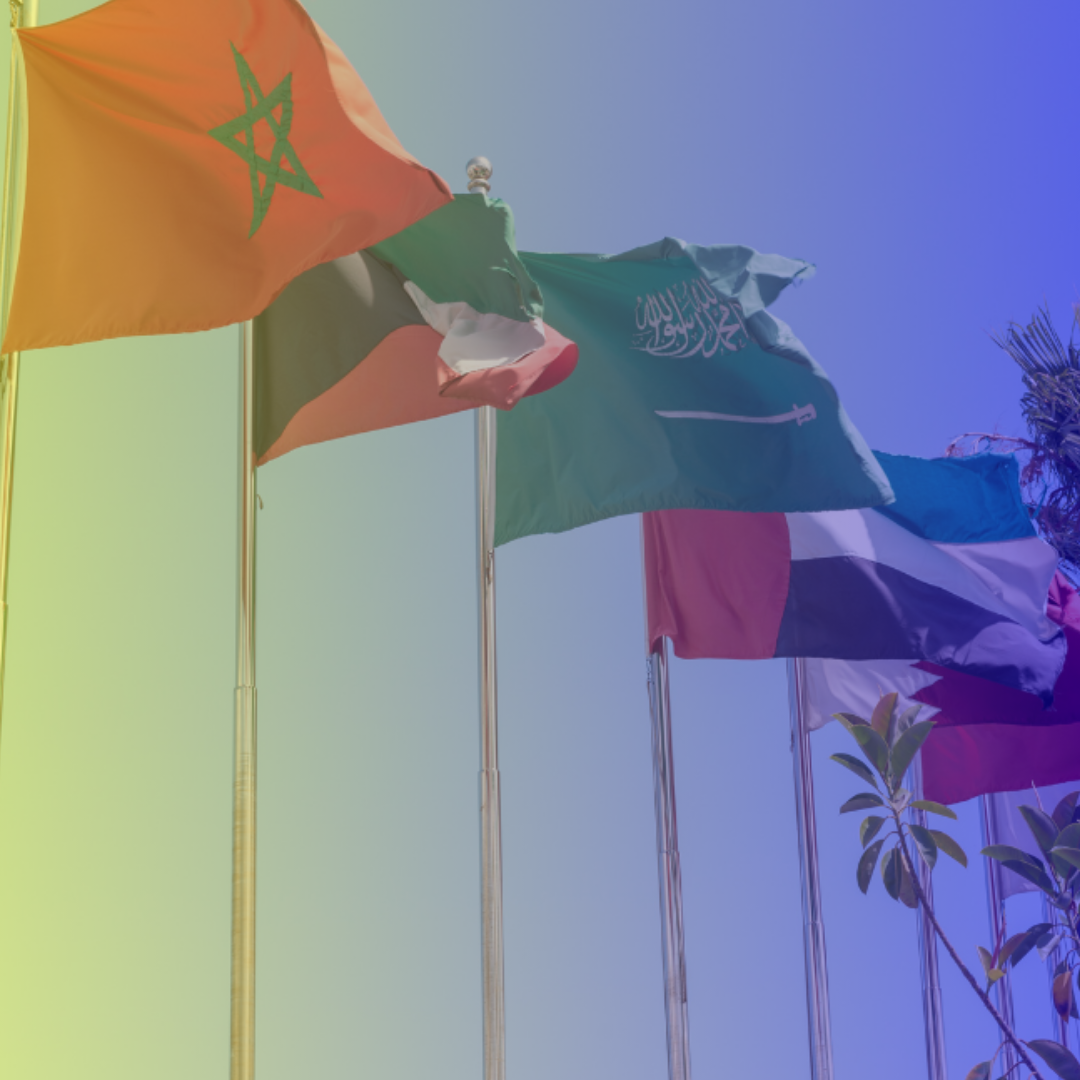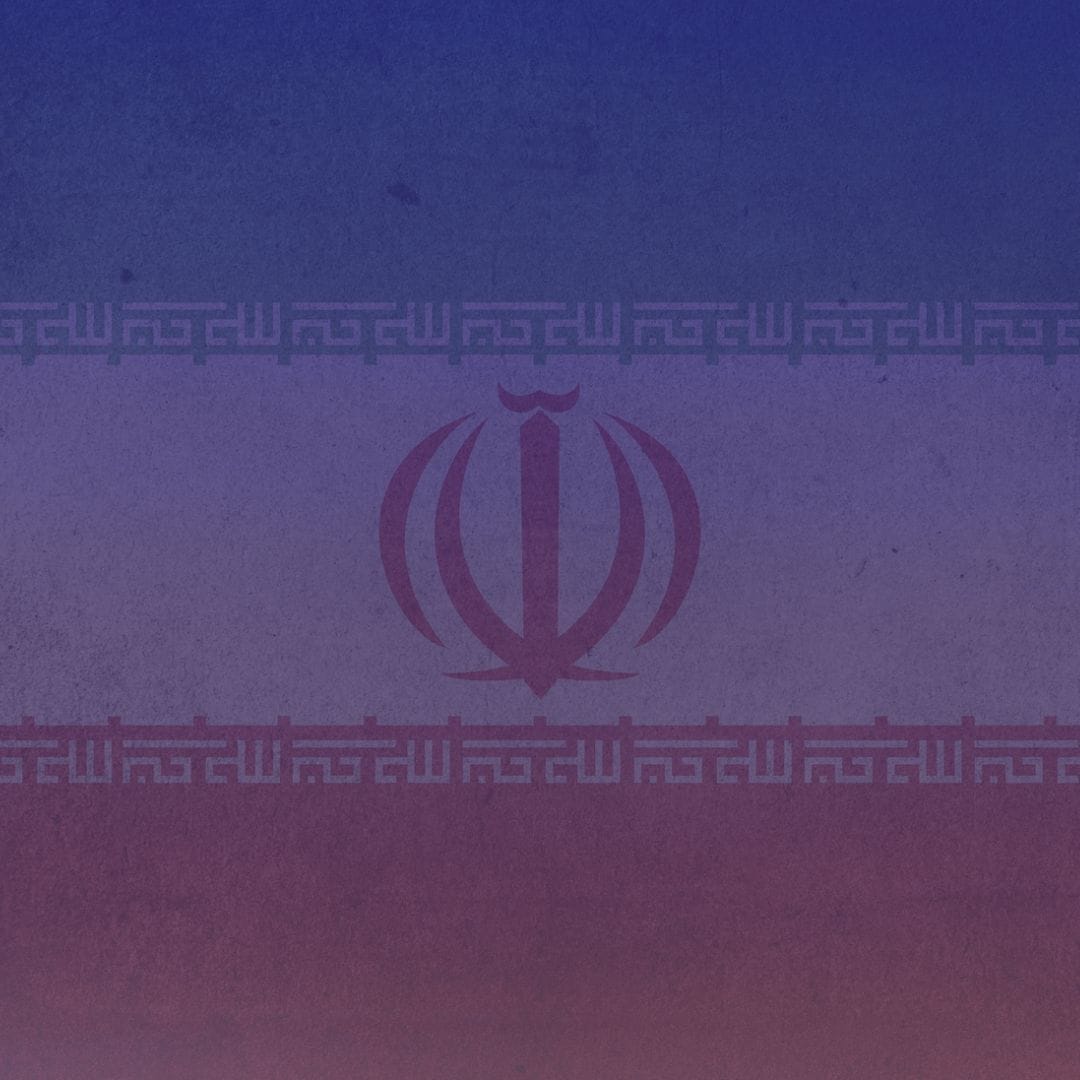
Written by Fatin Boualite and Andrea Aznar Macià
Edited by Tommaso Filippini
Established in 1979, the Islamic Republic of Iran (IRI) has always been at the centre of international politics due to its pivotal role in shaping and defining regional power balance in the Middle East. The past few years have been particularly challenging for its political leadership, with the aggravation of social and economic crises. Rampant inflation and rising social inequalities, along with the mass demonstrations in response to the death of Mahsa Amini and the formation of the “Women, Life, Freedom” movement, have set a troublesome context for the IRI and its path ahead. This adds to the Guardian Council’s obstruction of moderate and reformist candidates in the 2021 presidential election, which, leaving Ebrahim Raisi as the sole contender, further dampened public interest and political participation, resulting in the second lowest voter turnout recorded, a mere 42% (Carmi, 2023).
As Iran embarked on a new electoral cycle in March 2024, voters went to the polls to elect representatives for the Majlis-e Shura-e Islami – the parliament, officially known as the National Consultative Assembly – and the Assembly of Experts – a hybrid body consisting of 88 directly elected clerics. Although both institutions are perceived as wielding limited policy influence, the elections hold significance as they may reveal the Supreme Leader’s strategic intentions amidst looming domestic challenges, such as addressing voter apathy, planning for the future, reconciling reformist agendas, and upholding government legitimacy post-major protests.
Unpacking Elections Within Iran’s Institutional Structure
If Iran’s domestic politics have always been characterised by a high degree of complexity, the peculiar nature of the IRI’s institutional structure seems to be one of the reasons behind its intricacies. Embedded between the constitutional concept of the sovereignty of the people and the religious doctrine of the Velayat-e Faqih, the IRI involves a complex political system of elected and non-elected institutions. On the one hand, the former is represented by the President of the Republic, the Majlis and the Municipal Councils. On the other hand, the latter consists of the Expediency Council, the National Security Council, the Assembly of Experts, the Council of Guardians and the Judiciary. At the top of the Iranian institutional structure, the Supreme Leader embodies and synthesises both the Islamic and the republican soul of the Iranian constitution, which seems to shape an ambiguous political regime embedded into a “dissonant institutionalisation” (Farhi and Brumberg, 2016: 5). Therefore, it does not come as a surprise that the politics and policies of the country are defined by constant tensions between these two institutional wings, whose control is required to shape political reforms.
On 1 March, Iranians were called to the voting polls to appoint representatives for the Majlis and the Assembly of Experts. The former holds limited power, as its decisions are subject to the veto power of the Guardian Council – a constitutional body of 12 appointed and elected members with the aim of overseeing and ensuring compliance with the Iranian constitution. Instead, the designation of the latter, although many have compared it to a mere ceremonial body, may acquire particular relevance over the upcoming term due to its central role in the election of the Supreme Leader. Serving for the next eight years and considering that the current Supreme Leader, Ali Khamenei, is 84 years old, the 88 newly elected experts are expected to play an important role in choosing his successor, and thus inevitably and irreversibly shaping the IRI’s future (Loft, 2024).
If the history of the IRI has always been marked by institutional clashes, the 2024 elections are no exception. As usual, the Guardian Council has been the target of most controversies. The Council’s 12 members are Muslim jurists and lawyers – half of them appointed by the President and the others by the Majlis. Among other things, they hold the power to approve or reject candidates for the two legislative bodies. Through this capacity, moderate and reformist candidates are disqualified from the election upon claims of insufficient loyalty to the clerical establishment. The most notorious case for the 2024 elections was the disqualification of reformist former president Hassan Rouhani, who was seeking re-election in the Majlis. Holding the reins of Tehran from 2013 to 2021, he signed the 2015 Joint Comprehensive Plan of Action (JCPOA), commonly referred to as the Iran nuclear deal (Elwelly, 2024). Reformists expressed their discontent with the decision. However, there was not a unanimous call for boycotting the electoral process, as it happened on previous occasions, such as the 2021 presidential election – when the hashtag ‘There’s no way I will vote’ was trending on social media (Makooi, 2021). While the Reform Front – a key coalition of reformist parties – asked for a boycott, other activists and intellectuals urged reformists to participate (Iran International, 2024). In the end, 200 out of the 245 elected parliamentarians are hard-liners. Therefore, they constitute a vast majority of the chamber. While it could be argued that such a boycott cleared the way for Khamenei’s victory, at the same time it further damaged the legitimacy of the elections and of the regime. Beyond the structural intricacies of the regime, it is crucial to recognise how these dynamics influence broader challenges, such as popular discontent and the complexities surrounding the power succession, and have a much greater impact in the medium and long term than on last week’s results.
Echoes of Discontent and Succession Dilemma
One of the biggest issues in the country is the enormous gap or disconnection between the ruling elite and the population (Beizayi, 2023). The chances of finding reconciliation through the electoral process seem remote, especially after the wave of mass protests fuelled by the murder of Mahsa Amini in 2022. More than 500 citizens lost their lives during the first five months of the anti-government demonstrations that took over the country with chants of “Women, Life, Freedom”. Almost two years later, the strength of the resistance movement seems to have faded, even though discontent is still widely present and palpable (Al-Salmi, 2023). With this regard, the electoral results offer little promise for women’s political representation in the country: with a mere 11 out of the 245 elected parliamentarians being women. Moreover, the brutality of state violence has increased. The unprecedented rise of executions in Iran caught the attention of major Human Rights organisations, after more than 800 people were executed in 2023 (UN, 2024). The regime’s oppression and abuses have forced the Iranian society into turmoil diminishing the government’s ability to count on social passivity and silence during the succession process (Mohammadi, 2024).
This societal detachment is showcased by the extremely low turnout in the last elections of 2021, around 42%. The expectations of citizen participation in the electoral process this year were not any better (Semati, 2023). Therefore, it did not come as a surprise that only 41% placed their vote on 1 March recording a new historic low. Nonetheless, government officials do not seem as bothered and concerned by such low figures. Interior Minister Ahmad Vahidi announced that 25 million out of 61 million eligible voters participated in the election and approximately 5% of the ballots were blank votes (Tehran Times, 2024). President Ebrahim Raisi commended the “passionate turnout,” characterising it as a significant setback for opponents of the Islamic Republic.
Previous leaders after the revolution had based their legitimacy on big percentage turnouts: for example, the turnout for the parliamentary election was 71% in 1996, and 67% for the 2001 presidential election (The Iranian Primer, 2020). However, recent leaders seem to have prioritised control over participation and the regime’s legitimacy.
Over the upcoming years, the succession of Supreme Leader Ali Khamenei will be a substantial matter (Hussain, 2022). The disqualification of former President Rouhani from the legislative elections was a hard hit for moderate factions’ hopes for the future. This move might reinforce the candidacy of conservative Iranians, such as President Ebrahim Raisi and the current Supreme Leader’s son, Mojtaba Khamenei, to take power after Khamenei’s passing (Al-Sulami, 2024). The Islamic Revolutionary Guard Corps (IRGC) is another factor to consider since it has become Iran’s most influential organisation (CFR, 2024), particularly after acting as a counterweight during Mohammad Khatami’s reformist presidency between 1997 and 2005. Many former IRGC members hold key political positions and the organisation’s relationship with the Supreme Leader is mutually beneficial, reinforcing their power over domestic politics.
A Roadmap Amidst Sanctions and Economic Challenges
Under President Ebrahim Raisi’s administration, Iran’s economy has been marred by economic turmoil, characterised by rampant inflation, unprecedented currency devaluation, and a substantial budget deficit estimated at around $10 billion. This economic downturn results from both internal mismanagement and global factors, such as the sanctions imposed on Iran’s nuclear program and the effects of its support to Russia in the conflict with Ukraine (Sashi, 2024).
In 2023, Supreme Leader Ayatollah Ali Khamenei acknowledged Iran’s economic backwardness of a decade and emphasised the urgent need for rapid growth to address the tangible challenges faced by people and households (Khamenei, 2023). Khamenei designated the ongoing Iranian calendar year as “the year of controlling inflation” underscoring the political importance of addressing the issue in the country (IMNA, 2023). Iran has experienced currency devaluations several times, leading to a depreciation of the Riyal national currency and intensified inflationary pressures. As of the year 2023, the inflation rate for average consumer prices had surged to almost 64%, while inflation for specific food items had exceeded 90% (Ramadanian, 2023). Despite dire economic conditions, substantive public discussions regarding economic policies have yet to materialise. The Guardian Council, responsible for screening candidates for public office, constrained political diversity in the 2020 parliamentary election by approving only 43% of candidates, disqualifying numerous reformists, centrists, and even incumbents. Looking up at the 2024 election results, a similar pattern emerged characterised by the dominance of hardline factions with limited variations in economic approaches. (Afzali, 2024).
In addition, the country’s economic growth is projected to decelerate in 2024, as it’s becoming increasingly clear that Iran will grapple with substantial obstacles in sustaining a favourable economic course this year (Khajehpour, 2024). Despite the need for investment, the chance of securing such funds is low due to international sanctions and minimal prospects for diplomatic breakthroughs with Western countries, and safeguarding its fragile recovery amid expanding regional conflicts poses a growing challenge.
Iran’s allies in the resistance front, also known as the Axis of Resistance, including Yemen, Syria, and Lebanon, are engaged in confrontations with American and Israeli forces. Even if Iran refrains from direct involvement, the repercussions of the conflict are expected to adversely impact Iran’s recovery, primarily due to heightened efforts by Washington to restrict Iran’s oil exports and access to previously frozen funds (Salehi Isfahani, 2024).
Future Projections In A Global Landscape
Social unrest, economic turmoil, and political manoeuvring were just a few of Iran’s multifaceted challenges in the 2024 elections. However, the outcome of these elections is less likely to potentially shape Iran’s domestic stability, regional influence, and foreign policy i
With regard to Iran’s foreign relations, based on the country’s election outcome, there are fewer chances to have significant diplomatic outcomes. Iranian decision-making relies heavily on consensus, with Supreme Leader Khamenei holding ultimate authority over major issues. To safeguard the continuity of the authority within the Islamic Republic, the regime has opted to minimise risks by narrowing the field to the most devoted loyalists as shown by the clear triumph of hardliners. These developments suggest that the regime prioritised ensuring a safe transition to new leadership over concerns of popular legitimacy and representation in institutions. This approach also explains Iran’s foreign policy, which tends to appear more tempered in practice. Iran concentrates on asserting its diplomatic and moral leadership in the Islamic world and in the Palestinian resistance movement, rather than pursuing military confrontation with Israel or the US. In fact, such a conflict could entail severe security and economic consequences for the country and disrupt the primary objective of carefully orchestrating the domestic political transition (Mamedov, 2024) .
Furthermore, despite efforts by Raisi’s negotiating team, a nuclear deal remained elusive in indirect talks with the United States from 2021 to 2023.
Iran’s recent diplomatic achievements have mitigated its isolation but are unlikely to provide immediate growth. In 2023, under China’s assistance, Iran reconciled its diplomatic relations with Gulf neighbours, gained membership in BRICS, and joined the Shanghai Cooperation Organization. While these developments enhance Iran’s resilience against US sanctions in the long term, they are unlikely to foster investment or immediate economic expansion and political stability.
These accomplishments have thus far convinced Iranian hardliners that their strategy of resisting US pressure has elevated the IRI’s global standing, countering Western attempts at isolation. They perceive the emerging multipolar world as one where unilateral sanctions lose efficacy, enabling Iran to leverage its new geopolitical influence for the country’s advancement. In conclusion, Iran’s recent parliamentary elections reflect a continuation of the regime’s control-oriented approach, exacerbating societal disconnect and political and economic tensions. The dominance of hardline factions and the exclusion of reformist figures underscore ongoing challenges to the Islamic Republic’s stability and legitimacy. Amidst economic turmoil and geopolitical pressures, Iran will likely face difficult times in safeguarding its interests whilst navigating international dynamics.
___
Bibliography
Afzali, M. (2024). Spokesman of the Guardian Council: 2 thousand more candidates were approved. Irna.ir. https://www.irna.ir/news/83655267/
Ahmadli, J. (2024, January 11). Fair or Fake? Iran Readies for Key Elections in 2024. Geopolitical Monitor. https://www.geopoliticalmonitor.com/fair-or-fake-iran-readies-for-key-elections-in-2024/
Alem, Y. (2011, March). Duality by design: The Iranian Electoral System. International Foundation for Electoral Systems. https://www.sssup.it/UploadDocs/14620_2_R_Duality_by_Design__The_Iranian_Electoral_System_Yasmin_Alem.pdf
Al-Salmi, A. (2023, December 27). Scenarios in Iran in 2024: Regional openness to confront sanctions. Asharq Al-Awsat. https://english.aawsat.com/features/4753471-scenarios-iran-2024-regional-openness-confront-sanctions
Al-Sulami, M. (2024, February 19). Iranian elections and the challenges of popular discontent. Arab News. https://www.arabnews.com/node/2462581
Beizayi, H. (2023, December 2). Iran’s election in 2024 a factional friction and disqualifications. Iran News Wire. https://irannewswire.org/irans-election-in-2024-a-factional-friction-and/
Carmi, O. (2023, August 18). The 2024 Election Cycle Starts in Iran. The Washington Institute. https://www.washingtoninstitute.org/policy-analysis/2024-election-cycle-starts-iran
CFR. (2024, January 8). Iran’s revolutionary guards. Council on Foreign Relations. https://www.cfr.org/backgrounder/irans-revolutionary-guards#chapter-title-0-5
Continuous economic growth the key to country’s improvement & maintaining its position in the world. (2023, January 30). Khamenei.ir. https://english.khamenei.ir/news/9473/Continuous-economic-growth-the-key-to-country-s-improvement
Elwelly. (2024, January 24). Iran bans ex-president Rouhani from running for elite assembly . Reuters. https://www.reuters.com/world/middle-east/iran-bans-ex-president-rouhani-running-elite-assembly-2024-01-24/
Ewe, K. (2023, December 28). Elections around the world in 2024. Time. https://time.com/6550920/world-elections-2024/
Hussain, M. (2022, December 9). The other giant crisis hanging over the Islamic Republic of Iran. The Intercept. https://theintercept.com/2022/12/09/iran-regime-khamenei-death/
IMNA, (2023). The 1402 year was named ‘Controlling Inflation and Promoting Production. (2023, March 20). Iran’s Metropolitan News Agency . https://www.imna.ir/news/649192/%DB%B1%DB%B4%DB%B0%DB%B2-%D8%B3%D8%A7%D9%84-%D9%85%D9%87%D8%A7%D8%B1-%D8%AA%D9%88%D8%B1%D9%85-%D9%88-%D8%B1%D8%B4%D8%AF-%D8%AA%D9%88%D9%84%DB%8C%D8%AF-%D9%86%D8%A7%D9%85-%DA%AF%D8%B0%D8%A7%D8%B1%DB%8C-%D8%B4%D8%AF
In Iran, Gaza War Overshadows Preparations for 2024 Legislative Vote. (2023, November 18). Voice of America. https://www.voanews.com/a/in-iran-gaza-war-overshadows-preparations-for-2024-legislative-vote-/7361213.html
Iran International. (2024, February 13). “opportunists” challenge election boycott efforts in Iran. Iran International . https://www.iranintl.com/en/202402138233
Khajehpour, B. (2024, February 23). Deep Data: The Iranian economy in 2024. Amwaj.media. https://amwaj.media/article/deep-data-the-iranian-economy-in-2024
Kozhanov, Nikolay. “The Economic Backdrop of Iran’s Protests.” Middle East Institute, 17 Oct. 2022, www.mei.edu/publications/economic-backdrop-irans-protests.
Loft, P. (2024, January 26). Freedom and democracy in Iran. House of Commons – Library. https://researchbriefings.files.parliament.uk/documents/CDP-2024-0019/CDP-2024-0019.pdf
Makooi, B. (2021, June 16). Many Iranians plan to boycott vote for a president without power. France 24. https://www.france24.com/en/middle-east/20210616-many-iranians-plan-to-boycott-vote-for-a-president-without-power
Mamedov, E. (2024, March 4). Iran elections: Hardliners have grip, but foreign policy leans pragmatic | Responsible Statecraft. Responsiblestatecraft.org. https://responsiblestatecraft.org/iran-election/
Mohammadi, M. (2024, January 14). Succession after Khamenei’s death will not be smooth | Iran … Iran International . https://www.iranintl.com/en/202401143718
Ramadanian , A. (2023, April 18). The bleak outlook of Iran’s economy in the upcoming year; a challenging combination of inflation, recession, and poverty. BBC News . https://www.bbc.com/persian/articles/ckv3vvd0qvwo
Salehi Isfahani, D. (2024, January 31). Iran’s economy, so far resilient, now faces ultimate test | Responsible Statecraft. Responsiblestatecraft.org. https://responsiblestatecraft.org/iran-economy/
Sashi, Afshin. Iran at a Crossroads in 2024. 2024. https://www.arabnews.com/sites/default/files/rsu_iran_at_a_crossroads_in_2024.pdf
Semati, H. (2023, December 11). Iran 2024: Political challenges. The Iran Primer. https://iranprimer.usip.org/blog/2023/nov/17/iran-2024-political-challenges
Tehran Times, Interior Ministry discloses 41% voter turnout in March 1 elections. (2024, March 4). Tehran Times. https://www.tehrantimes.com/news/495727/Interior-Ministry-discloses-41-voter-turnout-in-March-1-elections
Trends in parliamentary elections 1980-2016. The Iran Primer. (2020, February 25). https://iranprimer.usip.org/blog/2020/jan/30/trends-parliamentary-elections
UN. (2024, January 23). UN experts urge Iran to respect international law and stop horrific … United Nations – Human Rights Office of the High Commissioner. https://www.ohchr.org/en/press-releases/2024/01/un-experts-urge-iran-respect-international-law-and-stop-horrific-executions
- Observatory EU-MENA Relations
- Observatory EU-MENA Relations
- Observatory EU-MENA Relations Publications

 THE DIGITAL EURO: Unlocking its potential
THE DIGITAL EURO: Unlocking its potential 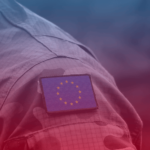 SAFE but Not Secure: The Challenge of a Common Defence and EU’s Unity
SAFE but Not Secure: The Challenge of a Common Defence and EU’s Unity 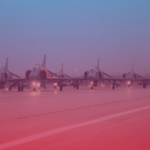 Blind Spots in AI Governance: Military AI and the EU’s Regulatory Oversight Gap
Blind Spots in AI Governance: Military AI and the EU’s Regulatory Oversight Gap 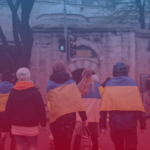 Selective Solidarity: The Desecuritisation of Migration in the EU’s Response to the Ukrainian Refugee Crisis
Selective Solidarity: The Desecuritisation of Migration in the EU’s Response to the Ukrainian Refugee Crisis 

